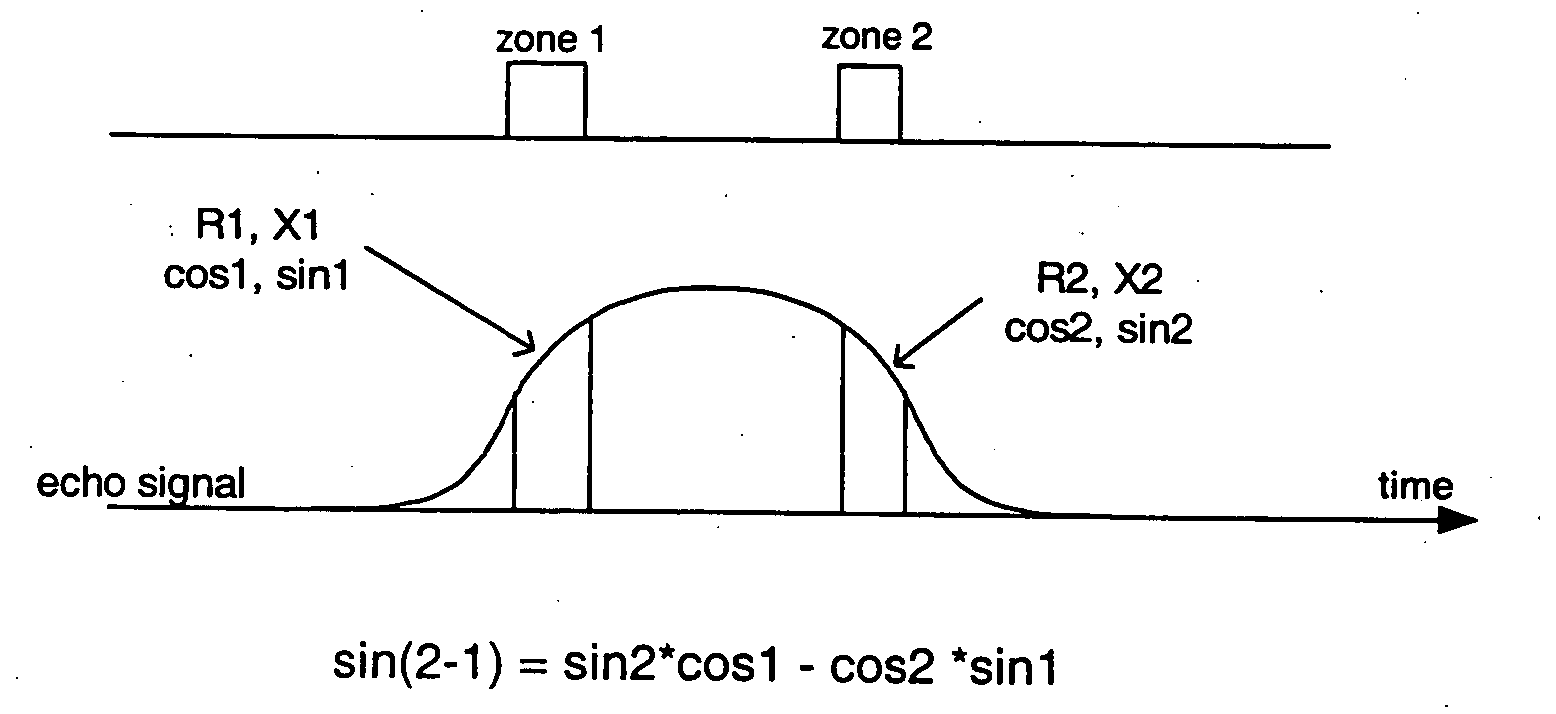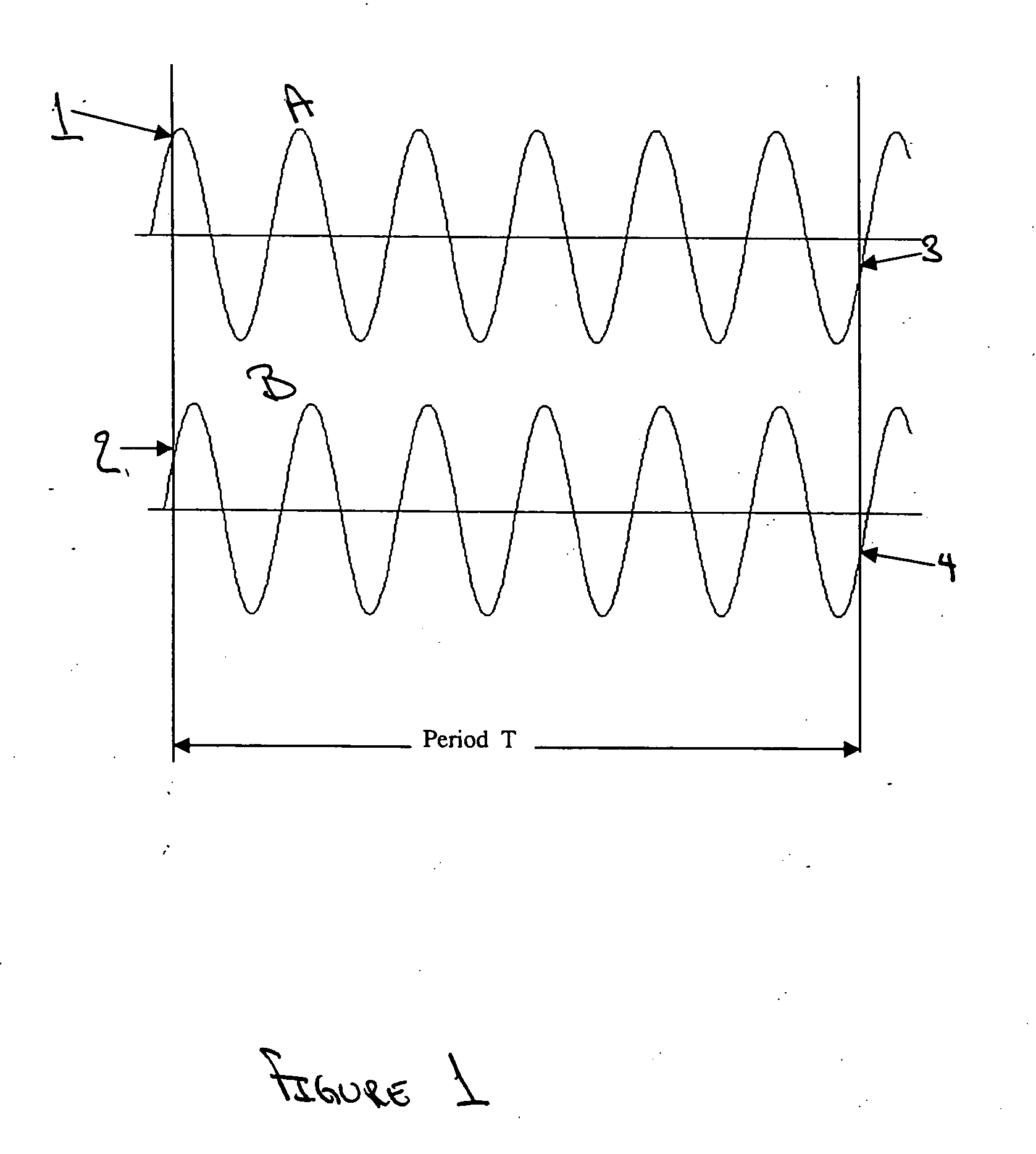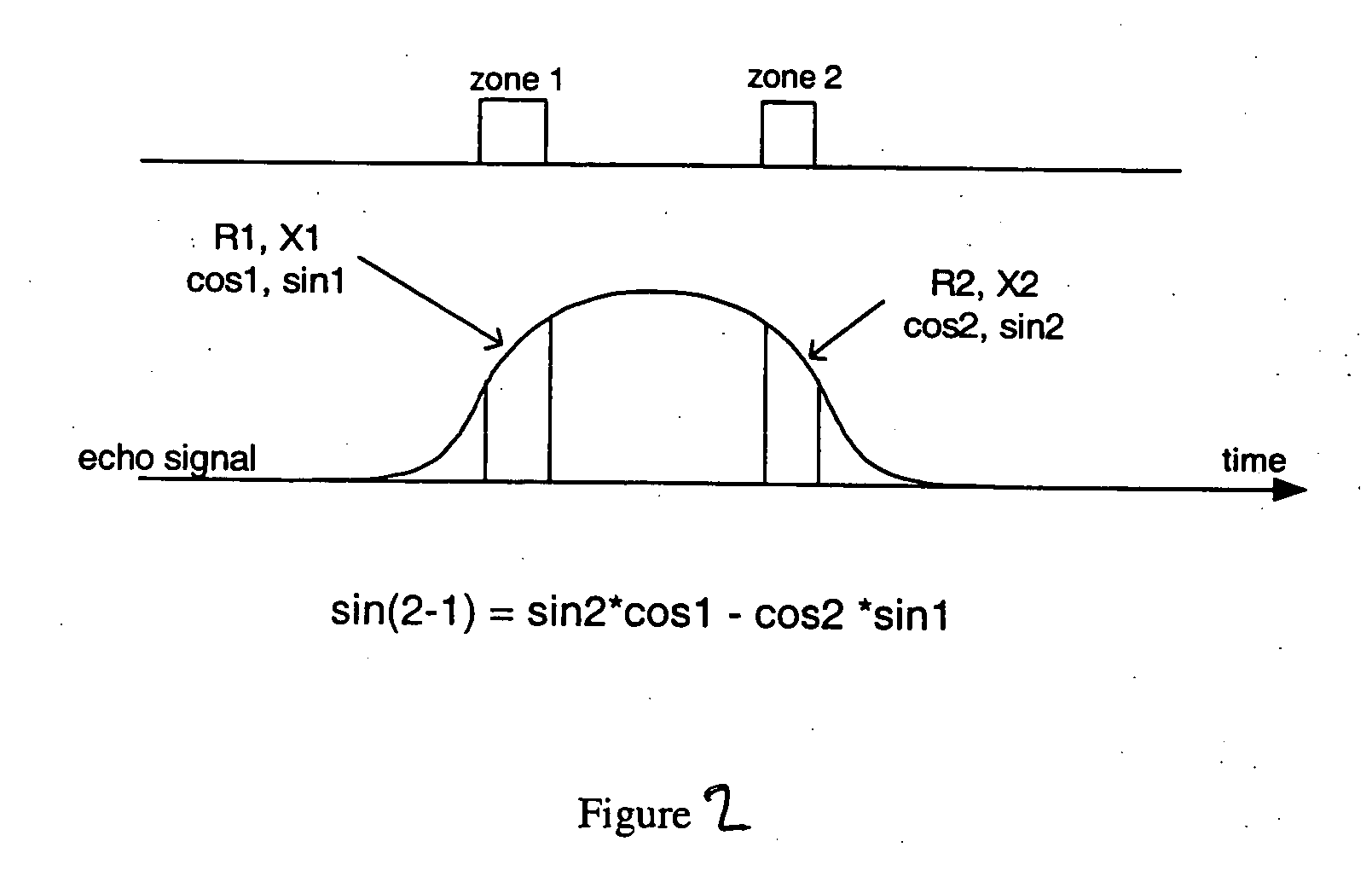Tuning of nuclear magnetic resonance logging tools
a nuclear magnetic resonance and logging tool technology, applied in the field of nuclear magnetic resonance logging tool tuning, can solve the problems of inability to perform lfst during nmr measurement, time-consuming, and not always practical, and achieve the effect of reducing the need for conventional off-line time-consuming tuning procedures, reducing systematic errors in porosity determination, and optimizing the signal to noise ratio
- Summary
- Abstract
- Description
- Claims
- Application Information
AI Technical Summary
Benefits of technology
Problems solved by technology
Method used
Image
Examples
Embodiment Construction
[0039] In an embodiment of the present invention, mistuning of the rf frequency from the Larmor frequency is measured wherein the main frequency component of the echo signal (Larmor Frequency) is compared with the rf frequency (frequency of the rf signals transmitted by the instrument and the reference of the phase-sensitive echo demodulation) by two or more phase measurements of the echo signal at fixed time intervals along the echo. This principle is illustrated in FIG. 1, which shows two phase measurements, phase1 and phase2, separated by a period T, resulting in the measurement of detuning as proportional to (phase2−phase1) / T. More particularly, FIG. 1 shows an echo signal (A) and a detector reference (calibration signal) at rf frequency (B). Measured phase1 is the difference between phases of the echo signal at 1 [ph1(1f)] and the detector reference at 2 [ph1(r)]. Accordingly, phase1=ph1(1f)−ph1(r). Measured phase2 is the difference between phases of echo signal at 3 [ph1(1f)+w...
PUM
 Login to View More
Login to View More Abstract
Description
Claims
Application Information
 Login to View More
Login to View More - R&D
- Intellectual Property
- Life Sciences
- Materials
- Tech Scout
- Unparalleled Data Quality
- Higher Quality Content
- 60% Fewer Hallucinations
Browse by: Latest US Patents, China's latest patents, Technical Efficacy Thesaurus, Application Domain, Technology Topic, Popular Technical Reports.
© 2025 PatSnap. All rights reserved.Legal|Privacy policy|Modern Slavery Act Transparency Statement|Sitemap|About US| Contact US: help@patsnap.com



